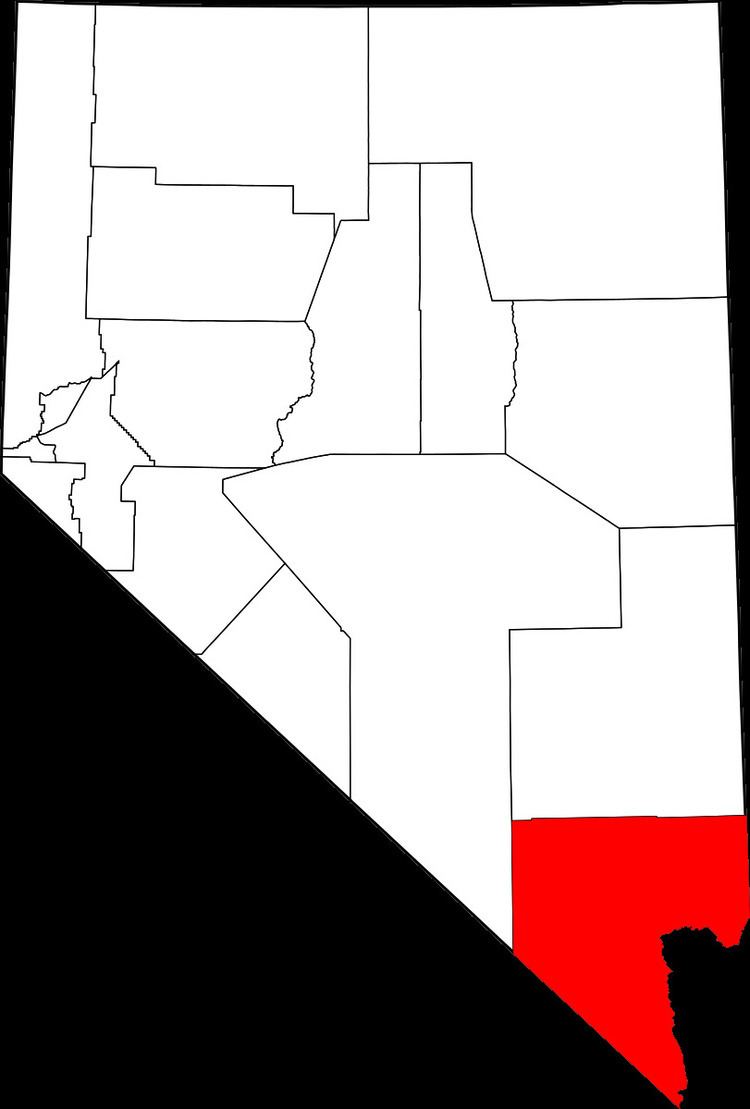 | ||
The Las Vegas–Paradise, NV MSA, also known as the Las Vegas–Henderson–Paradise, NV Metropolitan Statistical Area (2013), is in the southern part of the U.S. state of Nevada, coextensive since 2003 with Clark County, Nevada. A central part of the metropolitan area is the Las Vegas Valley, a 600 sq mi (1,600 km2) basin that includes the metropolitan area's largest city, Las Vegas as well as the other primary city, Paradise, Nevada. The area contains the largest concentration of people in the state. Cities in the metropolitan area include Las Vegas, Henderson, North Las Vegas, and Boulder City. The metropolitan area is one of the top tourist destinations in the world, drawing over 40 million international and domestic visitors in 2013 with a GMP of US$103.3 billion.
Contents
History
The metropolitan area was created for the 1970 census when it only included Clark County. In 2000, the metropolitan area was changed to include Nye County, Nevada and Mohave County, Arizona. This area appears to have existed since at least 1967 when the census bureau defined the SMSAs outside of New England as "a county or group of contiguous counties which contains at least one city of 50,000 inhabitants in addition to the county or counties containing such a city or cities, contiguous counties are included in an SMSA if, according to certain criteria, they are socially and economically integrated with the central city."
Demographics
As of the census of 2000, there were 1,375,765 people, 512,253 households, and 339,693 families residing within the MSA. The racial makeup of the MSA was 71.6% White (60.2% White Non-Hispanic), 9.1% Black, 5.7% Asian, 0.8% American Indian and 12.8% of other or mixed race. 22.0% were Hispanic of any race. As of 2009, the population in the metropolitan area had grown up to 1,902,834 people, being one of the fastest growing MSA in the United States.
In 1999, the median income for a household in the MSA was $44,616 and the median income for a family was $50,485. The per capita income was $21,785.
The United States Census Bureau 2009 estimates place the population for the Las Vegas Metropolitan Statistical Area at 1,902,834 people, and the region is one of the fastest growing in the United States. Large numbers of new residents in the state originate from California.
Office of Management and Budget definition
The Office of Management and Budget has designated Clark County as the Las Vegas-Henderson-Paradise, NV Metropolitan Statistical Area. The United States Census Bureau ranked the Las Vegas-Henderson-Paradise, NV Metropolitan Statistical Area as the 31st most populous metropolitan statistical area of the United States as of July 1, 2012.
The Office of Management and Budget has further designated the Las Vegas-Henderson-Paradise, NV Metropolitan Statistical Area as a component of the more extensive Las Vegas–Henderson, NV–AZ CSA, the 27th most populous combined statistical area and the 30th most populous primary statistical area of the United States as of July 1, 2012.
Tourism
In calendar year 2011, the majority of tourists arrived from the western states (55%) with 31% from California alone. Approximately 16% of tourists arrived from outside of North America. There is a growing interest in Las Vegas among Chinese tourists, with arrivals growing at an annual rate of 30%.
